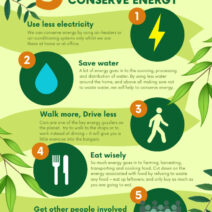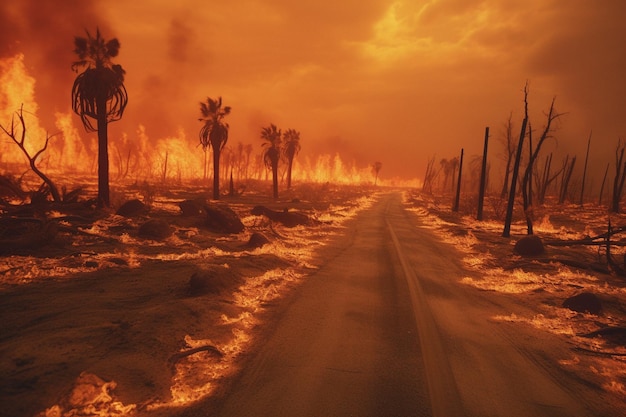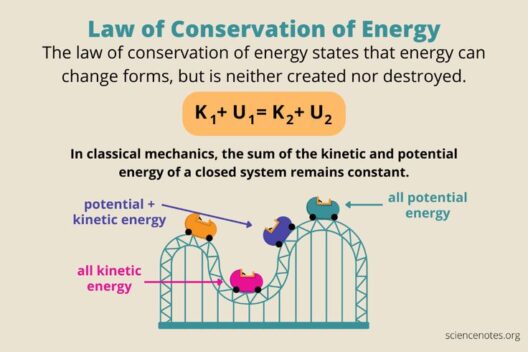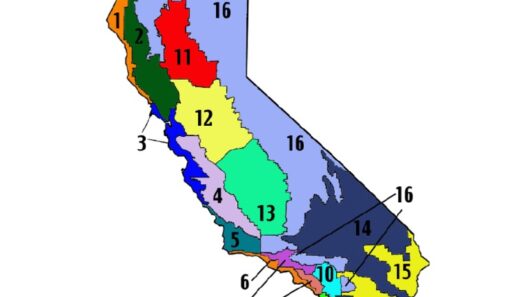Climate change has evoked myriad responses and reactions across the globe, prompting essential discussions about its implications for our environment and society. A prominent aspect of these discussions revolves around the increasing frequency and intensity of hurricanes and wildfires. While some may regard this correlation as a mere coincidence, an examination of scientific evidence reveals a far more complex reality, one that necessitates critical investigation.
To comprehend how climate change influences hurricanes, it is essential to first understand the mechanics behind their formation. Hurricanes, or tropical cyclones, arise over warm ocean waters, typically when sea surface temperatures exceed approximately 26 degrees Celsius (79 degrees Fahrenheit). As the climate warms due to anthropogenic greenhouse gas emissions, ocean temperatures continue to rise, providing an increasingly favorable environment for the development of these storms.
Research indicates that human-induced climate change is contributing to higher sea surface temperatures, thereby intensifying the potential energy available to fuel hurricanes. This increase in available energy correlates with the heightened frequency of powerful hurricanes categorized as Category 4 and Category 5 storms. The evidence from the past few decades suggests a troubling trend: stronger hurricanes are not merely an aberration but rather part of a broader pattern expected to unfold as global temperatures continue to rise.
Moreover, the relationship between climate change and hurricanes is accentuated by the notion of atmospheric moisture. Warmer air can hold more moisture, a phenomenon known as the Clausius-Clapeyron relation. Consequently, as the planet warms, atmospheric conditions favor the construction of storms laden with additional moisture. This can lead to catastrophic rainfall associated with hurricanes, exacerbating flooding risks during landfall. As these storms transition from ocean to land, the comprehensive effects of climate change become increasingly pronounced.
While hurricanes draw substantial attention due to their dramatic and often destructive nature, wildfires present a similarly grave environmental challenge exacerbated by climate change. The variables contributing to the frequency and severity of wildfires are multifaceted, interlaced with both natural and anthropogenic factors. Prolonged drought, higher temperatures, and alterations in precipitation patterns, direct consequences of climate change, create an environment conducive to wildfires.
The increasing temperatures hasten the evaporation of soil moisture, leading to drier conditions that can transform even the most innocuous vegetation into tinder for conflagrations. As ecosystems grapple with the ramifications of climate change, regions previously considered inhospitable to wildfires are experiencing unprecedented fire activity. The infamous wildfires in California, Australia, and the Amazon rainforest serve as poignant reminders of the escalating danger posed by climate change. These infernos, fueled by dry conditions and elevated temperatures, not only devastate vast landscapes but also contribute to the release of carbon dioxide, thereby further exacerbating the climate crisis and creating a vicious cycle.
The exacerbation of both hurricanes and wildfires prompts a critical reflection on the interconnectedness of climate phenomena. Land use practices, deforestation, and urbanization can intensify the severity of wildfires, while coastal development and infrastructure can influence hurricane impacts. The interplay of these factors illustrates that climate change is not merely an isolated issue but rather a complex web of interactions that compound the challenges we face in the modern world.
Moreover, the socio-economic implications of increased hurricane and wildfire activity demand attention. Vulnerable populations, particularly low-income communities, often bear the brunt of these climate-related disasters. Marginalized groups face greater risks due to inadequate infrastructure, limited access to resources for recovery, and heightened exposure to environmental hazards. The intersection of social vulnerability and climate change reveals stark inequalities that underscore the urgency of addressing climate issues as a matter of social justice.
As public awareness heightens, it is crucial to examine potential solutions and adaptations to mitigate the effects of climate change on hurricanes and wildfires. Enhanced forecasting models, improved land management practices, and a transition to renewable energy sources can play a vital role in addressing the root causes of climate change. Furthermore, investing in resilient infrastructure and community preparedness initiatives is essential for safeguarding populations against the inevitable impacts of climate disasters.
Global initiatives to curb greenhouse gas emissions necessitate collective action. International agreements such as the Paris Accord emphasize the responsibility of nations to work collaboratively toward reducing emissions and limiting global warming. The urgency of pursuing these agreements cannot be overstated, as scientists agree that failure to act decisively will compound the risks associated with hurricanes and wildfires, ultimately threatening ecosystems, economies, and human lives.
By reshaping societal perceptions around climate change and fostering a sense of environmental stewardship, individuals and communities can embrace proactive measures to combat its most detrimental effects. Public engagement in climate advocacy, grassroots movements, and educational campaigns can bolster collective efforts to effect change at local, national, and global levels. As the planet continues to face the ramifications of climate change, our responsibility to mitigate its impact on hurricanes and wildfires becomes ever clearer.
In conclusion, the interrelationship between climate change, hurricanes, and wildfires presents a compelling argument for urgent action. By understanding the science behind these phenomena, acknowledging socio-economic disparities, and committing to sustainable practices, we can forge a path towards resilience and a more sustainable future. The time for action is not just a call for mitigation but also an imperative to safeguard our environment for generations to come.








